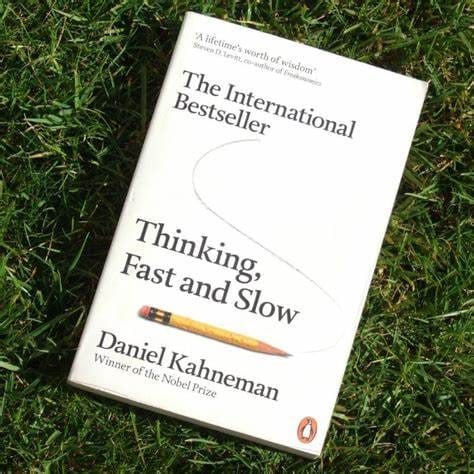\"Thinking, Fast and Slow\" by Daniel Kahneman
Systems That Shape Our Decision-Making
"Thinking, Fast and Slow" by Daniel Kahneman delves into the dual systems of thought that shape our decision-making processes. Kahneman, a Nobel laureate in Economic Sciences, explains that human thinking operates through two systems: System 1, which is fast, intuitive, and emotional; and System 2, which is slow, deliberate, and logical.
System 1 is responsible for quick, automatic responses and gut feelings. It operates effortlessly and often relies on heuristics and biases, which can lead to errors in judgment. System 2, however, requires conscious effort and is engaged when more complex and analytical thinking is needed. It is responsible for reasoning, calculations, and reflection. Still, it is often lazy and prone to defer to the quicker judgments of System 1.
Kahneman explores various cognitive biases that arise from the interplay between these two systems, such as the anchoring effect, availability heuristic, and confirmation bias. He illustrates how these biases can lead to flawed decisions in both personal and professional contexts.
The book also examines the concept of "prospect theory," which Kahneman developed with his colleague Amos Tversky. This theory explains how people make decisions under uncertainty and risk, highlighting the tendency to weigh potential losses more heavily than potential gains.
Throughout "Thinking, Fast and Slow," Kahneman provides numerous examples and experiments to demonstrate how these cognitive processes work in real-life situations. He offers insights into improving decision-making by recognizing the limitations of our intuitive thinking and encouraging more deliberate, analytical approaches when necessary.
The book is a comprehensive exploration of the complexities of human thought. It provides valuable lessons on how to make better choices by understanding the mechanics of our minds.
As an Amazon Associate I earn from qualifying purchases.
Created with systeme.io All-in-one website, blog, sales funnel, digital store hosting platform you can start using for free.


